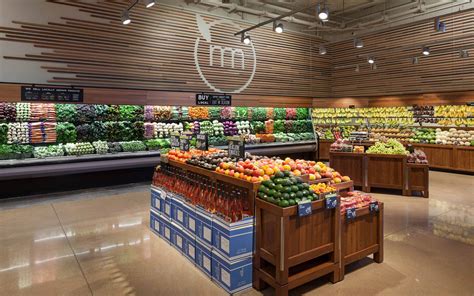Maximize Grocery Store Visits
To maximize your visits to the grocery store, it is crucial to adopt a proactive approach. Effective shopping begins long before you set foot in the store; it starts with a well-organized shopping list based on the meals you plan to prepare. By prioritizing your items in order of their location in the store, you can significantly reduce the time spent wandering aisle to aisle. This tactical method not only saves time but also mitigates the impulse to purchase unnecessary items.
"A good plan today is better than a perfect plan tomorrow." This quote emphasizes the need for preparation prior to your grocery run. Additionally, consider shopping during off-peak hours, typically early in the morning or late at night, when crowds are thinner. This enables a more relaxed shopping experience, allowing you to focus on your purchases and take advantage of special promotions and discounts without feeling rushed. By embracing these strategies, you can ensure that each grocery excursion is not only efficient but also enjoyable.

Crafting Your Shopping List
Creating an organized shopping list is a vital strategy for maximizing your grocery store visits. Start by categorizing items based on sections of the store, such as produce, dairy, and pantry staples. This approach not only saves time but also minimizes the likelihood of impulse purchases. Research shows that a well-structured list can reduce shopping time by approximately 20% (see Table 1).
In addition to categorization, consider including quantities next to each item to ensure you purchase the right amount without waste. Utilizing mobile apps can further streamline this process by allowing you to easily adjust your list as you think of new items.
Table 1: Benefits of an Organized Shopping List
| Benefit | Percentage Reduction |
|---|---|
| Shopping Time | 20% |
| Impulse Purchases | 30% |
| Food Waste | 15% |
In the end, an effective shopping list is a powerful tool that can transform your grocery shopping experience while contributing to smarter spending and less waste. Flowing seamlessly into other strategies, like finding deals or budget management techniques, it sets the foundation for a successful shopping trip.
Finding the Best Deals Fast
In the quest for financial savings, swiftly identifying the best deals within your grocery store can significantly impact your overall budgeting strategy. One effective approach is to familiarize yourself with the store’s weekly sales flyers, which often feature discounts on essential items. Planning your visit around these promotions not only helps you prioritize your shopping list but also ensures that you capitalize on time-sensitive offers. Additionally, utilizing loyalty programs and digital coupons can lead to further savings, as these often apply directly at checkout. While exploring the aisles, pay close attention to clearance sections where items nearing their expiration dates may be discounted substantially. By combining these strategies with a well-structured shopping list, you can navigate through aisles more efficiently and reduce needless expenditures while enhancing your shopping experience.
Streamlining Groceries on a Budget
One of the most effective ways to manage your grocery expenses is by adopting strategies that prioritize budgeting while shopping. Start by setting a firm budget before you enter the store. This price cap not only helps keep your spending in check but also encourages more thoughtful purchases. To achieve this, utilize your shopping list to focus on necessary items and avoid impulse buys. When reviewing your grocery options, consider buying store-brand products, which often offer significant savings compared to name brands without sacrificing quality. Furthermore, take advantage of any promotions or loyalty programs available through your local grocery store. Tracking weekly sales can empower you to plan meals around discounted items, allowing for cost-effective choices that still meet your dietary needs. By integrating these practices, you will streamline your grocery shopping while maintaining control over your budget, making every visit to the store both efficient and economical.
Time-Saving Shopping Techniques
Implementing effective time-saving shopping techniques can significantly enhance the efficiency of your grocery store visits. One crucial method is to prioritize your grocery list by categorizing items according to their locations within the store. For instance, grouping together produce, dairy, and canned goods prevents unnecessary backtracking, thus streamlining your shopping experience. Another valuable technique involves utilizing self-checkout kiosks when available, which often reduce wait times significantly compared to traditional cashier lines. Moreover, opting for non-peak shopping hours can help avoid the crowds and allow for a more relaxed and quicker shopping trip. By adopting these strategies, shoppers can navigate their local grocery store with increased efficiency while also minimizing stress associated with busy shopping environments.
Navigating Store Layouts Efficiently
Understanding the typical layout of grocery stores can significantly enhance your shopping experience. Most grocery stores are designed to encourage customers to browse, often placing essential items such as milk and bread in the back of the store. This layout can be effectively navigated by familiarizing yourself with the sections where your frequently purchased items are located. Additionally, mapping out these sections before your visit can save valuable time. It is also beneficial to take note of any promotional aisles or end-cap displays, as they often feature enticing deals. Employing a systematic route through the store — from produce to dairy and meat sections — not only streamlines your visit but also minimizes impulse buys that can inflate your grocery bill. By strategically maneuvering through these layouts, shoppers can ensure a more efficient and cost-effective experience.
Tips for Expedited Checkout
To enhance your grocery shopping experience, efficient checkout strategies are essential. First and foremost, consider utilizing self-checkout kiosks where available. This option often allows for quicker payment processing compared to traditional lanes, especially during peak hours. Additionally, ensure your payment method is prepared in advance; whether it be a credit card or mobile payment app, having it ready can significantly reduce transaction times. Moreover, familiarize yourself with the checkout layout. Positioning your items in the cart logically—grouping like products together—can facilitate a smoother scanning process. Lastly, take advantage of loyalty programs or digital coupons that streamline the payment process and potentially offer rewards. Implementing these strategies can transform a typically tedious end to your grocery run into an efficient and hassle-free experience.
Smart Inventory Management
Effective inventory management is crucial for streamlining your grocery shopping experience. Begin by taking stock of the items you currently have at home, ensuring that you make note of perishable goods that should be prioritized. This practice not only helps in reducing food waste but also informs your shopping list by highlighting what you need to replenish. Utilize mobile apps that assist in tracking inventory and remind you of what needs to be purchased. Additionally, categorize your shopping list by sections of the store to avoid backtracking, making your trip more efficient. Consider implementing a regular inventory check—perhaps weekly or bi-weekly—to stay ahead in managing your household supplies and ultimately maximize your time spent in the grocery store.

